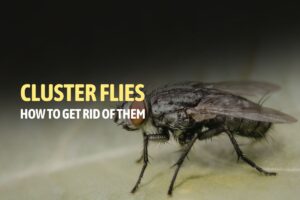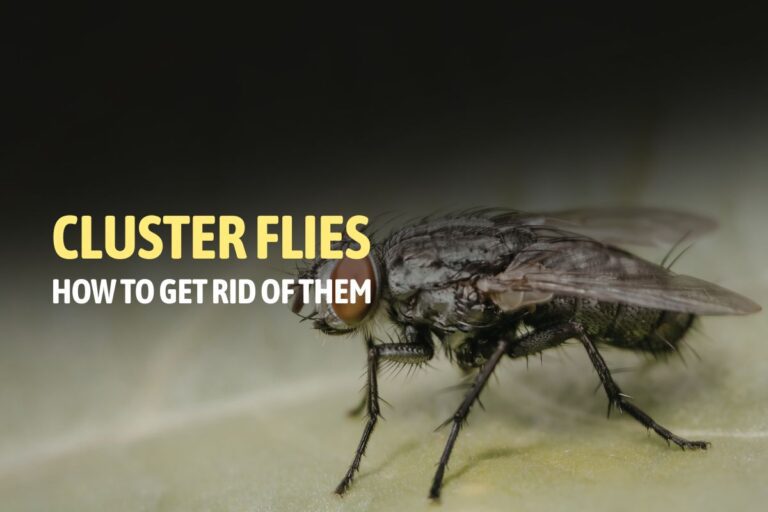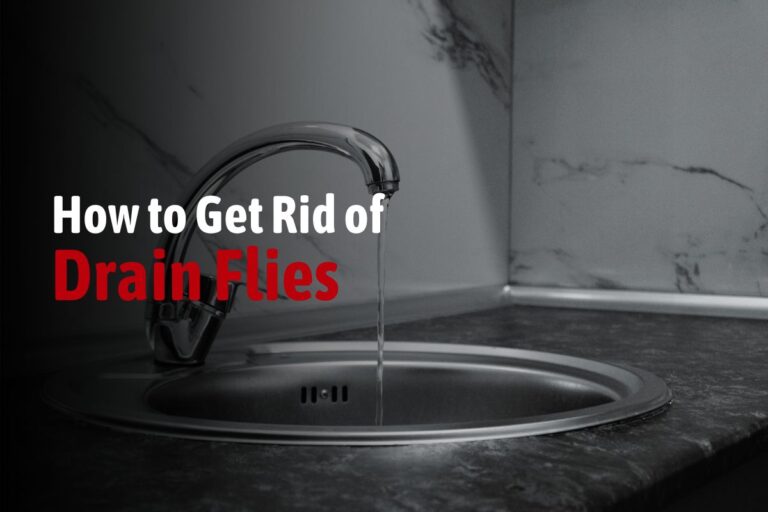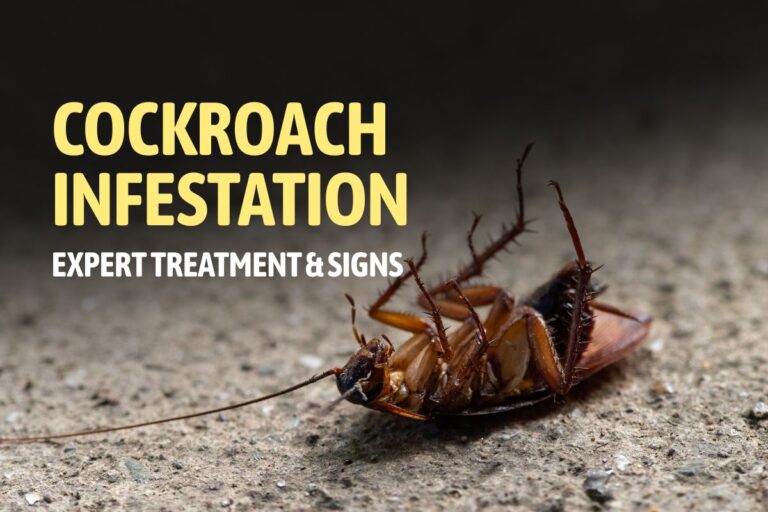Table of Contents
ToggleSilverfish are small, wingless insects that often sneak into homes without being noticed. While they don’t bite humans or spread diseases, they can still cause serious damage to books, wallpaper, fabrics, and even food storage. Many homeowners in Cardiff and across the UK find themselves asking: how to get rid of silverfish naturally without using harsh chemicals?
In this detailed guide, we’ll explore everything you need to know about silverfish control from identifying signs of their presence to using natural silverfish remedies, prevention tips, and when to call in professional help.
What Are Silverfish?
Silverfish are tiny, wingless insects that often surprise homeowners with their unusual look and quick movements. Their name comes from their shiny, silver-grey scales and the way they move in a wriggly, fish-like motion. Although small, they have existed for more than 400 million years, making them one of the oldest surviving insect species on earth. This incredible survival ability explains why silverfish can adapt to many environments, including homes in Cardiff and across the UK.
Appearance
Silverfish are easy to recognize once you know what to look for:
- Shape: They have a teardrop-shaped body that tapers at the end.
- Size: Typically between 12–19 mm long, although some may grow slightly larger.
- Colour: Their silvery or grey metallic sheen gives them a distinctive appearance.
- Antennae & Tails: They have long antennae in front and three bristle-like tails at the back, helping them sense their surroundings.
Because of their size and colour, silverfish can easily blend into bathrooms, kitchens, or lofts, making them hard to spot until damage appears.
Habits
Silverfish are nocturnal pests, which means they are most active at night. During the day, they prefer to hide in dark, moist, and undisturbed areas, such as behind skirting boards, inside cupboards, under sinks, or in storage boxes. Their shy nature often keeps them hidden, so spotting live silverfish usually means the infestation is already established.
Unlike pests such as cockroaches, silverfish do not roam around openly during the day. Instead, they quietly multiply in hidden spaces until you begin noticing silverfish infestation signs like paper damage or yellow stains on fabrics.
Diet
Silverfish are not picky eaters. They survive on a wide range of starchy or sugary materials, including:
- Paper and Glue: making books, wallpaper, and photo albums a target.
- Fabric: cotton, silk, and linen are often damaged.
- Food Crumbs and Pantry Items: cereals, flour, and sugar are favourites.
- Cardboard and Packaging: ideal food and shelter combined.
Because they feed on cellulose and carbohydrates, silverfish can cause silverfish damage to books, wallpapers, and stored clothes if left unchecked. Their ability to digest materials humans value most makes silverfish control crucial for protecting your belongings.
Why Do Silverfish Invade Homes?
If you’ve ever spotted a silverfish darting across your bathroom floor or hiding in a cupboard, you may wonder: Why do they choose my home? The answer lies in the conditions your property provides. Silverfish are opportunistic insects that thrive in places where they can find moisture, food, and shelter.
1. Moisture: Their Biggest Attraction
Silverfish love humid and damp environments, which is why they are so commonly found in:
- Bathrooms: around bathtubs, sinks, and behind toilets.
- Kitchens: under sinks, dishwashers, and leaky pipes.
- Basements and Lofts: poorly ventilated or damp areas become perfect hiding spots.
Without proper moisture control, your home can quickly become a silverfish haven. Dehumidifiers, extractor fans, and fixing leaks are key silverfish prevention tips.
2. Food Sources Around the House
Silverfish feed on materials rich in starch and sugar, which are commonly found in homes. These include:
- Paper and Cardboard: books, magazines, storage boxes.
- Clothing and Fabrics: cotton, silk, and linen.
- Pantry Goods: cereals, flour, sugar, and pet food.
- Wallpaper and Glue: adhesives provide an ideal snack.
This wide diet means silverfish can thrive in both living areas and storage spaces. If you’ve noticed silverfish damage to books or clothes, it’s a sign they’ve found a reliable food source in your house.
3. Shelter in Hidden Spaces
Silverfish prefer to stay hidden during the day. They seek out dark, undisturbed areas where they can multiply unnoticed, such as:
- Behind skirting boards or wall cracks.
- Inside cardboard boxes stored in lofts or garages.
- Under sinks or in cluttered cupboards.
- Around insulation materials in lofts.
Homes with excess clutter or rarely cleaned storage spaces are at higher risk of a silverfish infestation. Regular cleaning and loft clearance can help reduce hiding places.
The Bottom Line
Silverfish invade homes because your property unintentionally provides the ideal living conditions moisture, food, and shelter. While they may seem harmless at first, over time they can cause property damage, food contamination, and recurring pest problems. That’s why it’s important to combine good housekeeping with effective silverfish control methods or seek professional pest control services if the problem persists.
Homes with humidity problems, poor ventilation, or clutter are more prone to a silverfish infestation.
Signs of a Silverfish Infestation
Spotting silverfish in your home isn’t always easy. These insects are nocturnal, meaning they stay hidden during the day and only come out at night to feed. Because of this, many homeowners in Cardiff may not realise they have a silverfish infestation until damage has already been done. Luckily, there are clear signs you can look out for to confirm their presence.
1. Yellow Stains on Paper or Fabrics
Silverfish leave behind yellowish stains on items they crawl across. This is especially noticeable on books, wallpaper, photographs, and clothing. If you’ve found discoloured spots on stored clothes or documents, it could be a sign of silverfish activity rather than age-related damage.
2. Irregular Holes in Books and Documents
One of the most frustrating signs of silverfish is chewed edges and irregular holes in paper materials. They feed on cellulose and glue, which are found in:
- Books and magazines
- Wallpaper and adhesives
- Important documents or photo albums
If you notice unexplained damage to paper, silverfish are likely the culprit. This makes silverfish damage to books one of the most common homeowner complaints.
3. Shed Scales Near Hiding Spots
As silverfish grow, they shed tiny scales that look like fine dust or shimmery particles. You might find these near baseboards, loft corners, or storage boxes. The presence of scales is one of the clearest silverfish infestation signs because it shows they’ve been living in the area for some time.
4. Small Pepper-Like Droppings
Silverfish droppings are tiny, dark, and resemble black pepper or coffee grounds. They are often left near food sources such as pantries, wardrobes, or bookshelves. Since their droppings are so small, they can be mistaken for dust or dirt. Regular cleaning helps reveal whether what you’re seeing is ordinary debris or signs of a pest problem.
5. Spotting Live Silverfish at Night
Since silverfish are active in darkness, you are most likely to see them at night if you suddenly switch on a light. They move in a fast, fish-like wriggle across floors or walls, often disappearing quickly into cracks. If you spot even one live silverfish, there are likely more hiding nearby.
6. Damage Similar to Other Pests
Silverfish damage sometimes resembles that caused by carpet moths or even ants control. For example:
- Holes in clothing might look like moth damage.
- Gnawed cardboard boxes might be mistaken for rodents.
If you also see damage similar to that caused by carpet moths, check carefully to identify whether silverfish or another pest is responsible.
Dangers of Silverfish in Your Home
Although silverfish are not dangerous in the same way as rats, cockroaches, or bed bugs, they can still cause serious problems for your home and health. Many people ask, “Are silverfish harmful to humans?” The answer is no, they don’t bite, sting, or spread diseases, but their presence can still lead to unwanted consequences.
1. Damage to Property
One of the biggest risks of a silverfish infestation is the damage they cause to household items. Silverfish feed on starch, cellulose, and protein-rich materials, which are commonly found in:
- Books, newspapers, and important documents
- Family photo albums and artwork
- Wallpaper, adhesives, and cardboard boxes
- Clothing, especially cotton, silk, and linen
Over time, silverfish can leave irregular holes, frayed edges, and yellow stains on valuable belongings. This makes them a major concern for anyone who keeps books, vintage clothes, or stored fabrics at home.
2. Contamination of Food
Silverfish are also known to invade kitchens and pantries. They are particularly drawn to dry food items like flour, cereals, sugar, pasta, oats, and pet food. While they don’t spread serious diseases like cockroaches, they can still contaminate food supplies with their droppings, scales, and shed skins. Eating contaminated food can be unhygienic and unpleasant, especially if pests go unnoticed for long periods.
3. Worsened Allergies and Health Concerns
For individuals who suffer from allergies or asthma, silverfish can make things worse. Their droppings, shed scales, and body dust may act as allergens, triggering:
- Sneezing and runny nose
- Itchy or watery eyes
- Skin irritation
- Breathing difficulties in sensitive individuals
Although silverfish don’t bite humans, their presence can affect your indoor air quality and make life uncomfortable for allergy-prone family members. If left untreated, a silverfish problem can escalate, much like the risks of a professional pest control service being ignored for too long.
How to Get Rid of Silverfish Naturally
If you’ve spotted silverfish crawling in your bathroom, kitchen, or loft, don’t panic. The good news is that there are safe, budget-friendly, and chemical-free ways to manage them. Natural methods not only keep your home pest-free but also protect your family, pets, and environment from harsh chemicals. Here’s how you can eliminate silverfish naturally.
1. Reduce Moisture (Moisture Control Silverfish)
Silverfish thrive in humid and damp areas, which is why you’ll often see them in bathrooms, kitchens, and basements. Reducing moisture is the first and most important step in silverfish control.
- Use a dehumidifier: Place it in damp rooms like basements or lofts.
- Fix leaking pipes and taps: Even minor drips can create a breeding ground.
- Improve ventilation: Install extractor fans in bathrooms and kitchens.
- Keep surfaces dry: Wipe down sinks, bathtubs, and wet floors to deny silverfish a water source.
By controlling moisture, you make your home less attractive to these pests and prevent them from multiplying.
2. Declutter and Clean Regularly
Silverfish love dark, cluttered areas where they can feed and hide undisturbed. A regular cleaning routine can go a long way in preventing a silverfish infestation.
- Vacuum often: Pay special attention to skirting boards, under furniture, and behind appliances.
- Remove cardboard boxes: Silverfish are drawn to the glue and paper. Replace with plastic containers.
- Store valuables properly: Keep books, documents, and fabrics in sealed, airtight bins or bags.
- Wipe down surfaces: This removes food crumbs and starch residues that attract silverfish.
A cleaner, clutter-free home reduces hiding places and makes it easier to spot early signs of silverfish damage to books and clothes.
3. Use Natural Silverfish Remedies
Instead of harsh chemicals, you can rely on natural silverfish repellents to keep them away.
- Diatomaceous Earth (DE): A fine powder made from fossilized algae. Sprinkle it in corners, behind appliances, and cracks. It dehydrates silverfish upon contact.
- Cinnamon and Cloves: Their strong scent naturally repels silverfish. Place them in small sachets inside cupboards, bookshelves, or wardrobes.
- Cedar Oil: Known as a natural insect deterrent. A few drops on cotton balls placed near hiding spots can repel silverfish effectively.
- Lavender Oil (bonus): A pleasant-smelling alternative that discourages pests while freshening your home.
These remedies are safe for families and pets, making them a smart choice for eco-conscious pest control.
4. Silverfish Eggs Removal
To break the silverfish life cycle, it’s crucial to target their eggs. Unlike adults, silverfish eggs are hidden in cracks, crevices, and damp corners, making them hard to spot.
- Vacuum thoroughly: Focus on tight spaces like baseboards, wardrobes, and under sinks.
- Dispose of vacuum bags immediately: This ensures eggs don’t hatch and return.
- Seal entry points: Fill gaps around skirting boards, window frames, and pipes to stop silverfish from laying eggs inside your home.
Regular egg removal is one of the most effective silverfish treatment strategies to stop a recurring problem.
5. DIY Silverfish Traps
If you want to catch silverfish overnight, DIY traps can be very effective.
- Sticky traps: Place near skirting boards, bookshelves, or cupboards.
- Glass jar trap: Line the outside with masking tape (so silverfish can climb in), then place a piece of bread inside. Once they fall in, they can’t escape the smooth glass.
- Newspaper roll trap: Dampen a rolled-up newspaper and leave it overnight. Silverfish crawl in for shelter, and you can discard it the next day.
While these traps help in silverfish removal, they should be combined with other methods like moisture control and cleaning for long-term success.
How to Prevent Silverfish in Your Home
Stopping silverfish from returning is as important as removing them. Use these silverfish prevention tips:
- Keep humidity below 50%.
- Store dry food in airtight containers.
- Seal cracks and gaps in walls or flooring.
- Regularly clean lofts, basements, and storage areas.
For further prevention, explore our guide on winter pest management since silverfish thrive during colder months indoors.
Silverfish in Specific Areas of Your Home
Silverfish in Bathroom
Bathrooms are their favourite spots due to constant moisture. Dry wet towels quickly, use exhaust fans, and clean grout to keep them away.
Silverfish in Kitchen
Silverfish are drawn to pantries and food spills. Keep dry goods sealed, clean crumbs, and wipe surfaces daily.
Silverfish in Loft or Attic
Lofts often hold books, fabrics, and cardboard. Regular loft clearance reduces hiding places.
Silverfish vs Other Household Insects
Silverfish are often confused with other insects. Compared to ants, moths, or cockroaches, they:
- Do not spread disease.
- Move in a wriggly, fish-like motion.
- Prefer paper and glue over food waste.
If unsure, a professional pest inspection can confirm what pest you’re dealing with.
When to Call Professional Silverfish Pest Control
DIY remedies are great for small silverfish problems, but when the situation gets out of control, it’s time to call the experts. A growing number of silverfish in your home, constant property damage, or spotting them in multiple rooms are all signs that professional help is needed.
Hiring a professional silverfish pest control service in Cardiff ensures:
- Accurate pest identification: Experts can confirm whether you’re dealing with silverfish or another insect like carpet beetles or moths.
- Safe and effective treatments: Professionals use targeted methods that eliminate silverfish without putting your family or pets at risk.
- Long-term prevention: Pest specialists don’t just remove silverfish; they also address the causes, such as moisture control and sealing entry points, to stop them from coming back.
If silverfish are damaging your books, clothes, or food supplies, don’t wait for the problem to spread. Check out our Other Insect Control Services for expert silverfish removal and prevention in Cardiff.
Conclusion
Silverfish may not harm your health, but they can cause significant damage to books, clothes, and food storage if ignored. By using natural remedies like diatomaceous earth, cinnamon, and cedar oil, along with good moisture control and regular cleaning, you can effectively eliminate and prevent them from returning. However, if you’re dealing with recurring silverfish problems or suspect a larger insect infestation, professional help is the most reliable solution.
Contact Cardiff Pest Control today for expert silverfish removal and other insect control services to keep your home safe, clean, and pest-free.
Frequently Asked Questions
1. What eats silverfish?
Spiders, centipedes, and earwigs are natural predators of silverfish.
2. Can silverfish damage books and papers?
Yes, silverfish feed on cellulose in paper, damaging books, wallpapers, and important documents.
3. What is the best natural silverfish repellent?
Cinnamon, cedar oil, and cloves are strong natural repellents that keep silverfish away.
4. How do I stop silverfish in my bathroom?
Reduce moisture with exhaust fans, seal cracks, and use natural repellents like cedar oil or diatomaceous earth.
5. Are silverfish harmful to humans?
No, silverfish don’t bite or spread diseases, but they damage property and may trigger allergies.







